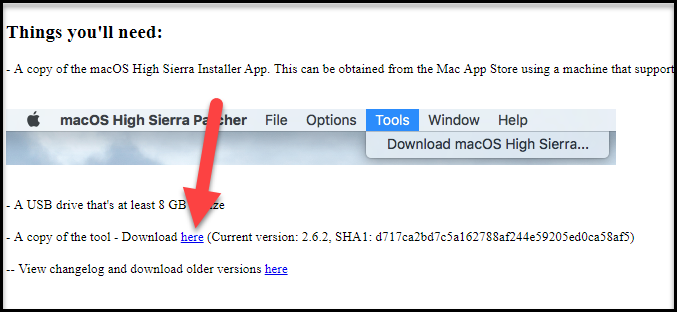

When you’re ready, click Erase to wipe the drive.
#Macos high sierra usb download mac os#
If you plan to just copy and paste the Terminal command, name your USB drive “HighSierra.” You’re free to change it, but you’ll need to modify the command to reference the new name.Įnsure that the “Format” drop-down is set to Mac OS Extended (Journaled) and that “Scheme” is set to GUID Partition Map. Next, click Erase from the toolbar. We need to give the USB installer a temporary name in order for the Terminal command below to work. In Disk Utility, select your USB drive from the list on the left. Plug the USB drive into your Mac and launch the Disk Utility app. You can find Disk Utility by searching for it in Spotlight or in the Applications > Utilities folder.


Creating the installer will erase all data on the USB drive, so make sure to back up any existing data that may be on the drive. To create a bootable macOS High Sierra USB installer, you need a USB 2.0 or USB 3.0 drive with a capacity of at least 8GB. Therefore, close the installer app by pressing Command-Q on your keyboard.
#Macos high sierra usb download upgrade#
This app is how you would normally upgrade your Mac, but we don’t need to run it now for the purposes of creating our bootable USB installer. Once it’s done, the High Sierra installer app will automatically launch. The macOS High Sierra download is relatively large at just over 5GB, so it may take some time to download depending on the speed of your Internet connection. When High Sierra is finally released, you’ll be able to find it linked in the sidebar of the Mac App Store homepage. The first step to create your own bootable macOS High Sierra USB installer is to download the app-based installer Apple provides via the Mac App Store. For the current beta, users will find High Sierra in their Purchased tab after registering their Mac. Step 1: Download macOS High Sierra from the Mac App Store


 0 kommentar(er)
0 kommentar(er)
